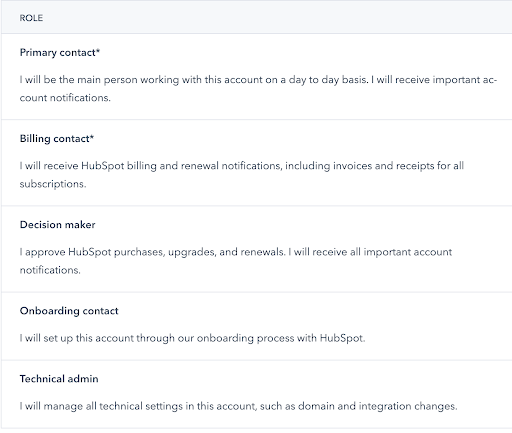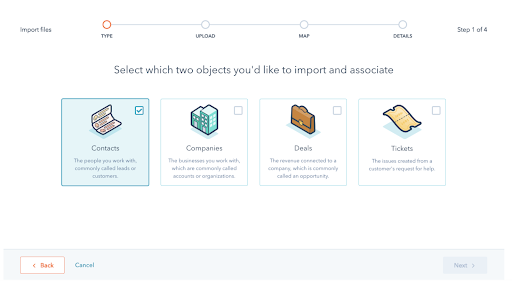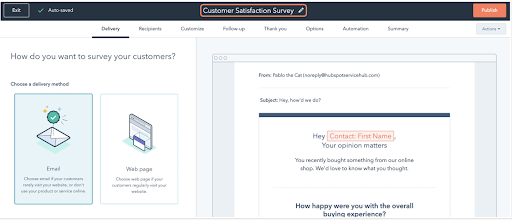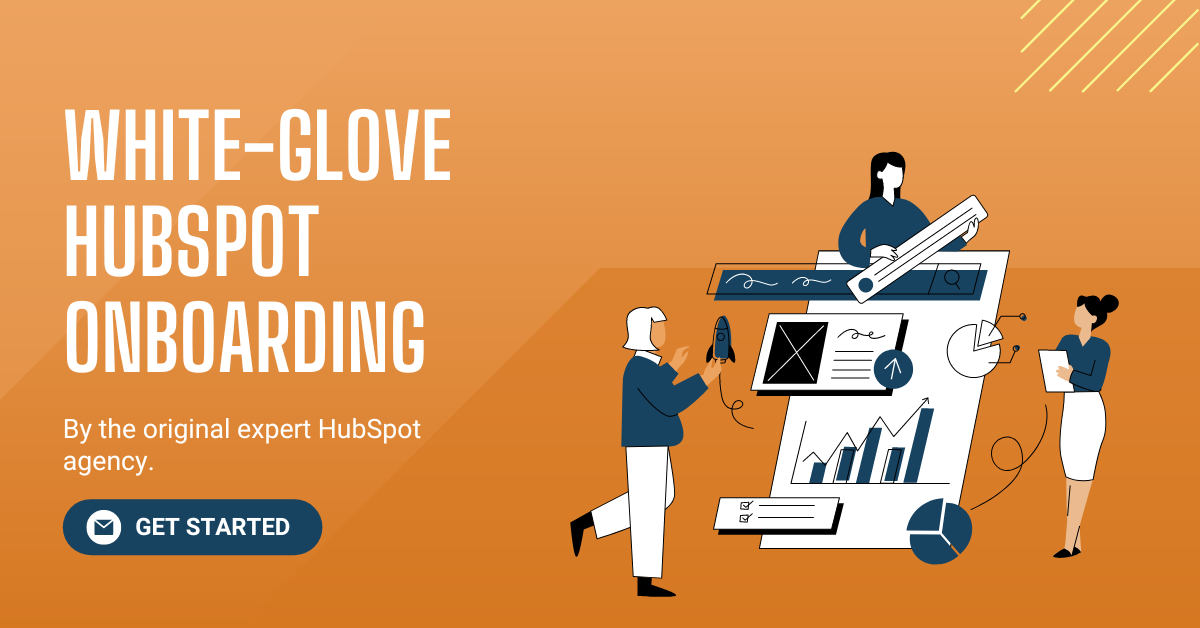When was the last time you tried something new? A new dish at your favorite restaurant. A new show in your Netflix queue. A new instructor for your daily Peloton ride.
For many of us, the answer is likely “it’s been a while.” And understandably so—as humans, we are hardwired to gravitate towards routine. Especially in the current climate of our world.
Interestingly enough, though, marketers have quite a recent appetite for “newness,” especially when it comes to martech. A recent survey reports that a whopping 60% of marketing leaders plan to increase new martech spend over the next 12 months. Garter predicts much of this spend increase is thanks to the explosion of remote work, virtual events, and omnichannel consumer behavior.
The survey mentioned above dove deeper into what types of technologies those 60% of marketers plan to invest in. At the top of the list? Marketing analytics, marketing automation, CMS and web experience, social media, and CRM capabilities.
If you’re included in the majority of marketers who plan to increase martech spend in 2021, will you invest in one platform or multiple to fulfill the above needs? And would your answer change if we told you there is a single platform that offers those capabilities ... and more?
That single platform is HubSpot.
If you recently adopted HubSpot or are considering it, the first step to maximizing your martech investment is a thorough onboarding process. Because let’s face it—a new technology investment is only as good as the work you put into it during the onboarding stage.
Below, we highlight the top tips for setting up your HubSpot portal for long-term success.
Basic HubSpot Settings You Need to Know About
1. Adding UsersGranting your team access is likely the first step in setting up any new technology. Keep in mind that with HubSpot, you have several options outside of simply adding someone and moving on.
HubSpot allows you to select the access level and permissions an individual user is granted. For instance:
- Each hub (marketing, sales, service) has its own level of permissions. You might want to grant your entire sales team access to the sales tools, but limit what they can publish on the website. Or for team members who are still going through training, perhaps you limit them to read-only access, and give them more publishing capabilities as they learn the platform.
- You can provide Super Admin access, meaning that a user has access to everything. They can also add or remove any user.
- You can create and assign teams. If you have multiple parties in a single portal (think: your marketing agency, website development team, and your own internal users), consider assigning them a team to keep track of who’s who.
HubSpot allows you to invite individual users via email or Salesforce import, or if you have a larger team, uploading via CSV file.
Outside of giving individual user access, you’ll also want to consider member roles. These members will receive important information about your portal, including account notifications, billing details, portal upgrades, onboarding, and technical settings.

2. Set Account Defaults
Now that you have your team(s) properly added to your portal, it’s time to build out your default settings. These can be found by navigation to Settings > Account Defaults.

Here, you’ll add the basics like:
- Your company name.
- Time zone, which will localize tools like email sends, social media messages, and reporting.
- Company information, including your address and company domain. The information you enter here will also appear in email footers.
Then, it’s time to move into some fun stuff—your branding.
Adding your branding will help make the build out of individual assets—think emails, landing pages, CTAs—quickly and easily match your existing branding.
Here, you’ll add:
- Your brand logo.
- Favicon.
- Brand colors, including your primary color, and several secondary colors. Secondary colors may be used for links, CTAs, form buttons or fields, etc.
Your account defaults is also where some important security settings live. We recommend to our clients that they enable Two-factor Authentication for all users who have access to their portal for an extra layer of security.
This area also allows you to select your user language, date format, and currency.
3. Setup Your Website & Integrations
Now, you’ll want to get your existing assets synced, including your website and outside integrations.
Even if you don’t plan to host your website on the HubSpot CMS, it’s important to add a tracking code to your site. This helps to not only monitor your website traffic, but also tie individual contact actions with your online assets. The HubSpot tracking code can be added to WordPress, Shopify, Squarespace, Drupal, Magento, Wix, Joomla, and more.
Next, it’s time for integrations.
HubSpot has an extremely expansive App Partner Program, meaning you can sync thousands of outside apps with your portal. This helps connect disparate data sources and make your marketing, sales, and service programs even more powerful. Integrating your outside techs is as easy as going to Settings > Integrations > Connected Apps, and then “Visit App Marketplace.
![]()
Check out some of our team’s favorite HubSpot integrations here.
You can also connect the following:
- Email: Connect your inbox from Gmail, Outlook 365, or other providers to send, receive, and save emails directly to a contact record. This saves sales teams from copying and pasting conversations into CRM records.
- Ecommerce: If your business has ecommerce offerings, HubSpots allows you to connect stores natively from Magento, Shopify, Unific, or WooCommerce (custom integrations are possible, too).
HubSpot Marketing Hub Setup
1. Determine Property Fields
HubSpot’s property fields are two-fold: they are how you’ll house and organize important contact, company, and deal information, and also what a website visitor will see when filling out a form.
There are a number of default contact properties HubSpot provides—basics like email, first and last name, industry, and also action-oriented fields properties like became a lead date, last activity date, and more.
Users can also build out custom properties. These can be built out in the form of single or multiple checkboxes, date pickers, files, number, radio select, dropdown select, single- or multi-line text.
Depending on your HubSpot license, you may also be able to create hidden fields, which help automate actions. For example, if a contact fills out a sales-oriented form, you can add a hidden field to automatically mark them as a sales qualified lead.
2. Scrub & Upload Your Database
So you have your property fields built out. Now align contacts associated with each of those fields.
Where does your current contact database live? In an existing CRM? An Excel spreadsheet? Some other disparate data source that is scattered across multiple filing cabinets?
Wherever it lives, you’ll want to get it into HubSpot. This will allow you to track your existing contacts’ actions and market to them in the future.
HubSpot allows you to upload contacts directly from a spreadsheet (CSV, XLS, or XLSX formats). You can also store what’s called multiple objects. Objects are type or category of information—contacts, companies, deals, and tickets. 
There are also important best practices to keep in mind when uploading your database, which you can read through here. Also keep in mind that you’ll want to map existing properties to the ones you build out in step one. For instance, if you’re using the default email property but it was previously called e-mail in your last database, you’d map those to each other.
Important note: You wouldn’t move into a brand new house without sorting through your current home, right? It’s the same with moving from one database to HubSpot—your new portal is in pristine condition. So you should be scrubbing your database and filtering out any contacts that are no longer needed.
3. Build Out Forms
After steps one and two, you’ll have a solid foundation in place to create HubSpot forms.
Forms help you gather information about visitors and convert them into contacts. They also help you gain additional information about existing contacts. Once your property fields are built out, consider updating the existing forms on your site to HubSpot forms, so you can immediately start collecting visitor information and syncing it with the CRM.
HubSpot forms can be added to HubSpot-hosted or external websites. You can also associate follow-up emails after a visitor converts, select internal teammates who will receive a conversion notification, and style the form—all directly in the editor.
Depending on your HubSpot license, you also have the option to build out progressive fields. These automatically display different fields depending on the information you know about the visitor. For example, if you already have a contact in your database, perhaps you ask them for their industry or role instead of asking them to re-enter their first and last name.
HubSpot Sales Hub Setup
1. Connect Your CRM
While HubSpot is a CRM platform, some users prefer to utilize a legacy platform. As mentioned above, HubSpot has a vast integration ecosystem, and one of the most common integrations we’ve seen is with Salesforce (though, it’s certainly not the only option).
Mapping your current CRM allows you to sync information between the existing database and your HubSpot portal. That way, you maintain consistent data across the two platforms, and sync marketing and sales actions with individual contacts and deals. Depending on the CRM you use, you can enable a bi-directional sync.
Explore HubSpot’s CRM integration ecosystem here.
2. Upload Sales Documents
You likely have a number of documents your sales team uses daily—terms and conditions, spec sheets, case studies, proposal templates, etc.
Sales Hub’s documents functionality allows you to upload documents in multiple formats (PDF, PowerPoint, or Word Documents) to have ready to send via a connect inbox. This enables your sales team to quickly send these without digging through hundreds of files, and also track which prospects or deals are opening which documents. It’ll also help you drill down into which documents close the most sales, and which might need a refresh.
3. Build Out Your Pipeline
HubSpot says it perfectly: “Because sales processes differ from company to company (and even product to product), your sales pipeline should be unique and reflect the typical buyer's journey.”
The Sales Hub deal pipeline allows you to do just that—build out a customized, visual pipeline that maps directly to the stages your prospects take on the journey to becoming a customer.
There is a lot of strategy that goes into building a pipeline, but HubSpot provides users with a seven-step process by default:
- Appointment scheduled
- Qualified to buy
- Presentation scheduled
- Decision maker bought-in
- Contract sent
- Closed won
- Closed lost
Depending on your HubSpot license, you can also build out multiple deal pipelines. This is handy if you have different products or services that have vastly different sales funnels, you operate in multiple markets, or across different verticals.
HubSpot Service Hub Setup
1. Create Feedback Surveys
Do you know what your customers really think of you? If you’ve never asked, you may be surprised by their answers.
Service Hub’s surveys do just this—enable you to send customer feedback surveys directly from your portal. Surveys can be sent via email or set up on a webpage.
Consider surveys about pre- and post-sale. How was the sales process? How was a prospect’s interaction with your business development team? How satisfied are they with your service or product? How likely are they to recommend your company to a colleague or friend?

2. Build Out Knowledge Base
Few experiences are more frustrating than trying to answer a question about a product or service, only to come up empty-handed. We’ve all been there. But setting up Service Hub’s Knowledge Base functionality allows you to safeguard your customers from experiencing this hassle.
A knowledge base is essentially a self-service library of FAQs, how-to guides, reference articles, and more. While it sounds similar to a blog, a knowledge base also allows you to add support forms for additional help and enables visitors to rate how helpful the content is. This (hopefully) decreases the number of queries your service team receives, and helps you gauge content effectiveness.

Want More HubSpot Onboarding Support?
The steps listed in the post are just the start of your HubSpot onboarding journey.
Here at Ready North, we believe that HubSpot is the backbone of the most successful marketing programs. To get the most ROI on your HubSpot portal, you need a partner that will do more than guide you—you need someone to get their hands dirty in your portal and implement your needs. And, that's exactly what we're here for. Learn more about our HubSpot onboarding services by clicking the button below.

%20Logo_BlueOrange_Trademark.png?width=800&height=269&name=Ready%20North%20(RN)%20Logo_BlueOrange_Trademark.png)




.jpg?width=300&name=Services%20Hub%203%20(3).jpg)



COMMENTS